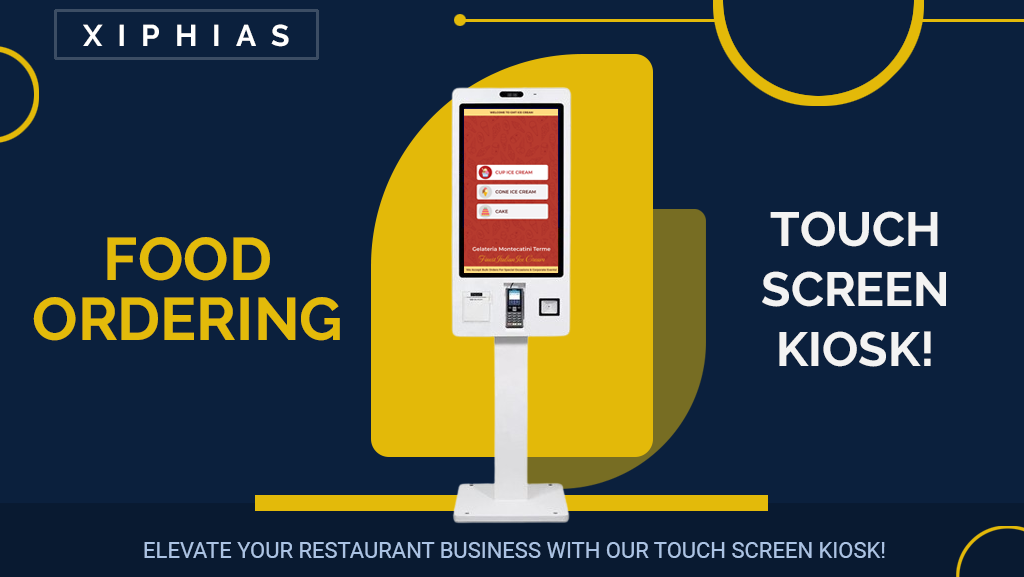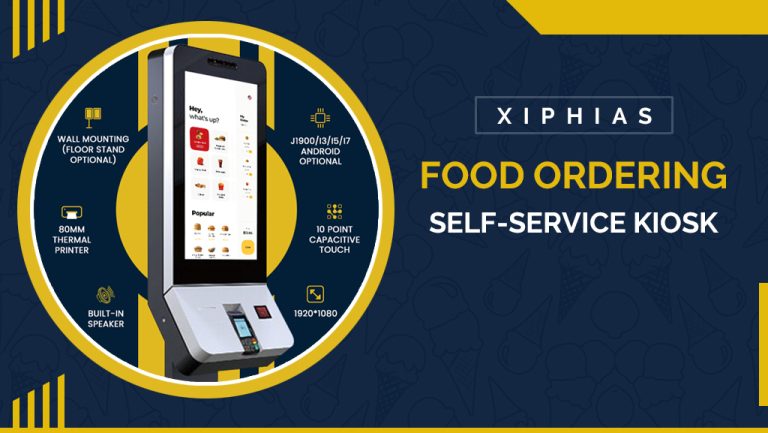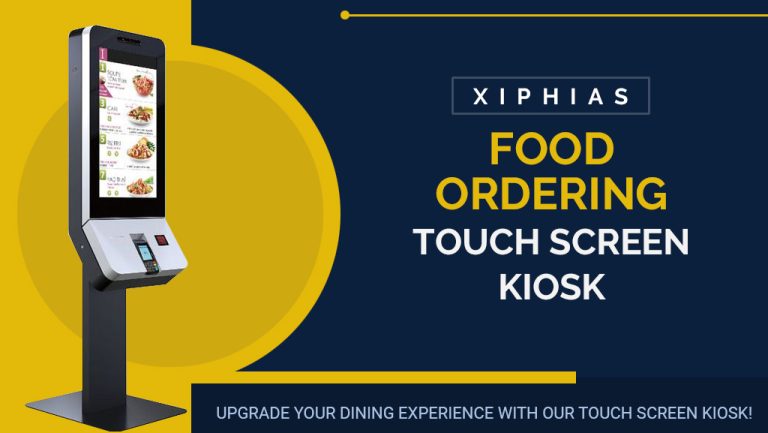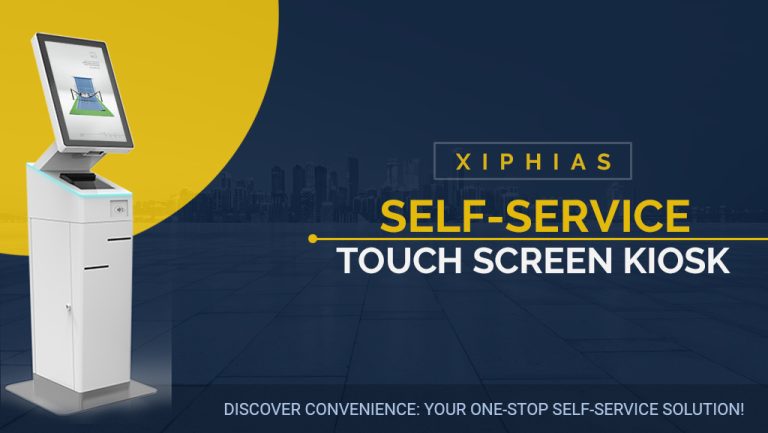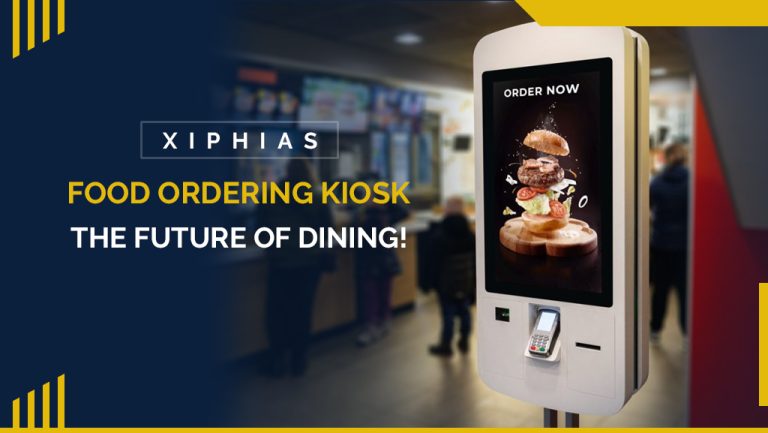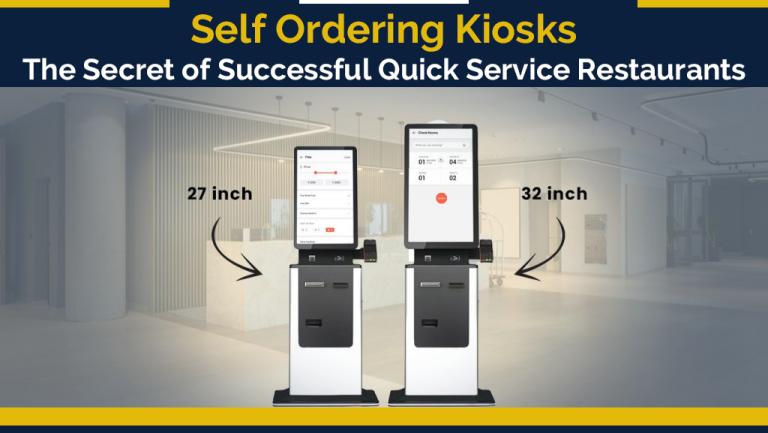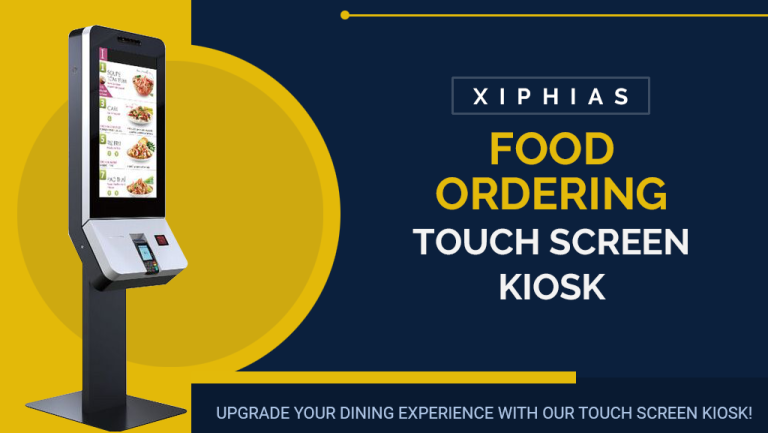The Future of Fast Service: Exploring the Benefits of Food Ordering Kiosks in Restaurants
In today’s fast-paced world, consumers expect quick service, convenience, and minimal wait times, especially when dining out. As a result, food ordering kiosks have emerged as a game-changing solution for restaurants. These self-service machines are not just a novelty but a powerful tool reshaping the way restaurants operate. With food ordering kiosks, restaurants can improve efficiency, enhance customer satisfaction, and stay competitive in an increasingly tech-savvy marketplace.
Streamlining the Ordering Process
Food ordering kiosks are revolutionizing how orders are placed in restaurants. By offering a self-service option, restaurants allow customers to take control of their own ordering experience. This significantly reduces long queues and frees up employees to focus on more critical tasks such as food preparation or customer support.
The kiosks are designed to handle multiple orders simultaneously, which is especially useful during peak meal times. This allows restaurants to serve more customers in less time, enhancing overall productivity. Additionally, customers no longer have to wait for an available cashier, making the ordering process smoother and faster.
Faster Service with Fewer Errors
Human error is a common issue in traditional restaurant service. Miscommunication between the cashier and customer can lead to incorrect orders, resulting in frustration and waste. Food ordering kiosks address this by giving customers full control over their orders. They can choose menu items, customize their meals, and confirm their selections without any misunderstandings.
Kiosks also allow customers to review their orders before payment, reducing mistakes and improving order accuracy. This leads to a more satisfying dining experience, where customers receive exactly what they want, exactly how they want it.
Enhanced Customer Experience
One of the most appealing aspects of food ordering kiosks is the improved customer experience they offer. Kiosks give customers the flexibility to browse the menu at their own pace, view detailed descriptions of dishes, and customize their orders according to their preferences. For those with dietary restrictions or allergies, kiosks provide a hassle-free way to modify meals without feeling rushed.
Moreover, kiosks often display appealing images of menu items, helping customers visualize their choices before ordering. This can inspire customers to try new dishes and create a more engaging dining experience.
Increased Sales Through Upselling
Upselling is a key advantage of food ordering kiosks. Many kiosks are programmed to suggest complementary items or upgrades based on the customer’s order. For instance, after selecting a sandwich, the kiosk may prompt the customer to add fries or a drink, or upgrade to a combo meal.
These subtle prompts are more effective than traditional upselling by employees because they don’t feel pushy or intrusive. Customers are more likely to consider these suggestions when they’re presented visually on the screen. As a result, kiosks can help restaurants boost their average order value and increase sales without extra effort from staff.
Reducing Labor Costs
With labor costs on the rise, restaurants are seeking ways to operate more efficiently without sacrificing service quality. Food ordering kiosks offer a practical solution by reducing the need for front-line staff. Instead of employing multiple cashiers, restaurants can rely on kiosks to handle a large portion of the ordering process.
This allows restaurants to reallocate labor to areas that require more human interaction, such as food preparation, table service, or maintaining the cleanliness of the dining area. By optimizing labor distribution, restaurants can operate more efficiently and maintain profitability.
Integration with Modern Payment Systems
Food ordering kiosks are designed to support a variety of modern payment methods, making the checkout process faster and more secure. Customers can use credit cards, mobile payment apps, or contactless payment options to complete their orders. This reduces the need for handling cash, speeds up transactions, and provides a convenient, hassle-free experience for diners.
The ability to offer multiple payment options also enhances customer satisfaction, as people increasingly prefer digital payments over traditional methods. Additionally, faster transactions mean shorter wait times, enabling restaurants to serve more customers in less time.
Valuable Data Collection and Insights
One of the hidden benefits of food ordering kiosks is the wealth of data they provide to restaurant owners. Each transaction is recorded, giving managers valuable insights into customer preferences, popular menu items, and peak ordering times. This data can be used to refine menu offerings, create targeted marketing campaigns, and improve overall operations.
Improving Hygiene and Reducing Contact
The demand for contactless solutions has grown significantly since the COVID-19 pandemic, and food ordering kiosks are perfectly suited to meet this need. By allowing customers to place orders and pay without interacting directly with staff, kiosks reduce the risk of virus transmission. This is especially important in maintaining a safe and hygienic dining environment for both employees and customers.
Additionally, kiosks are easy to clean and sanitize between uses, ensuring that they remain a safe option for everyone. Many kiosks now offer touchless payment options, further minimizing physical contact and promoting safer transactions.
Customization and Special Requests
Food ordering kiosks provide an excellent platform for customers to customize their orders according to their preferences. Whether it’s adding extra toppings, removing ingredients, or specifying portion sizes, kiosks give customers the ability to tailor their meals to suit their tastes. This is particularly important for individuals with dietary restrictions, allergies, or specific health needs.
Additionally, kiosks often feature detailed descriptions of each menu item, including ingredients, nutritional information, and allergen warnings. This allows customers to make informed decisions about what they’re ordering, enhancing their dining experience.
Consistency Across Locations
For restaurant chains and franchises, maintaining consistency in service and product offerings is crucial. Food ordering kiosks ensure that customers receive the same level of service and quality at every location. The kiosk interface is standardized, so regardless of where a customer is dining, they experience the same menu options, order process, and pricing.
This consistency not only improves the customer experience but also helps maintain the restaurant’s brand identity. By ensuring that every location follows the same ordering process, restaurants can deliver a reliable, predictable service that customers appreciate.
The Future of Food Ordering Kiosks
As technology continues to evolve, food ordering kiosks will become even more advanced, offering restaurants new opportunities to improve service and efficiency. Future developments may include voice recognition, AI-driven recommendations, and facial recognition for personalized experiences.
Integration with mobile apps and loyalty programs will also become more common, allowing customers to pre-order and collect their meals without waiting. These innovations will further enhance convenience, making kiosks an essential part of the modern dining experience.
Restaurants that adopt food ordering kiosks today are positioning themselves for long-term success. As customers become more accustomed to self-service technology, demand for food ordering kiosks will only increase. By staying ahead of the curve, restaurants can provide faster service, improve accuracy, and create a more enjoyable dining experience for their customers.
Conclusion
Food ordering kiosks represent the future of fast service in the restaurant industry. They offer a range of benefits, from speeding up service to improving order accuracy, all while enhancing the customer experience. Additionally, kiosks help restaurants reduce labor costs, increase sales through upselling, and provide valuable data for operational insights.
As consumer expectations for convenience and efficiency continue to rise, food ordering kiosks will play an increasingly important role in shaping the future of dining. Restaurants that embrace this technology will be well-equipped to meet the demands of today’s fast-paced, tech-driven world, ensuring they remain competitive and successful in the years to come.

